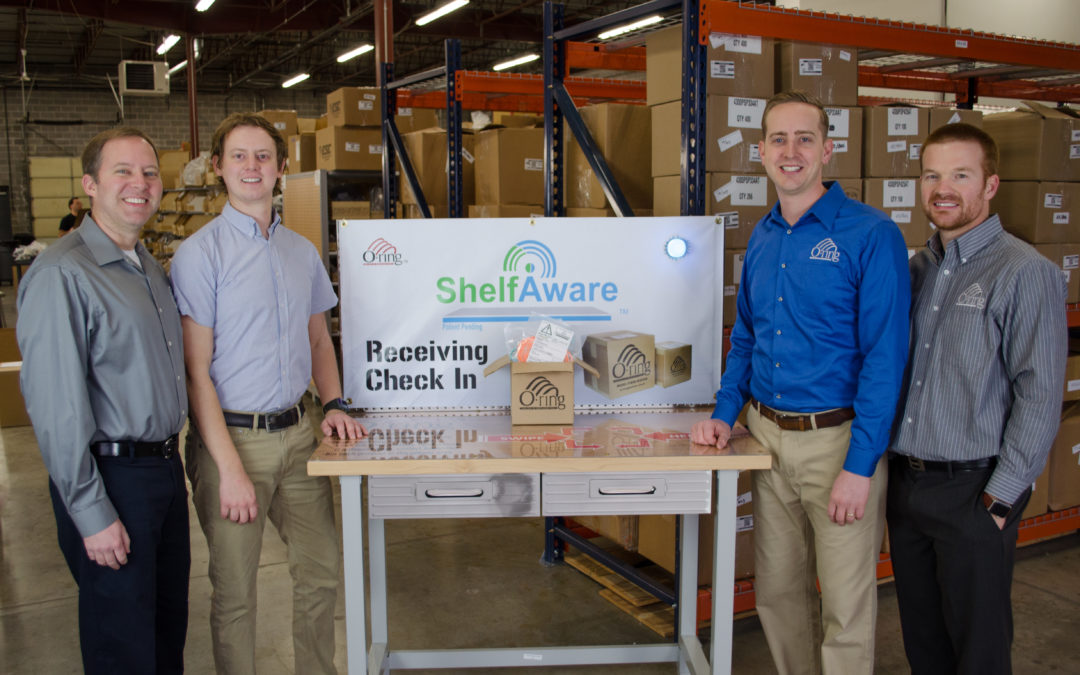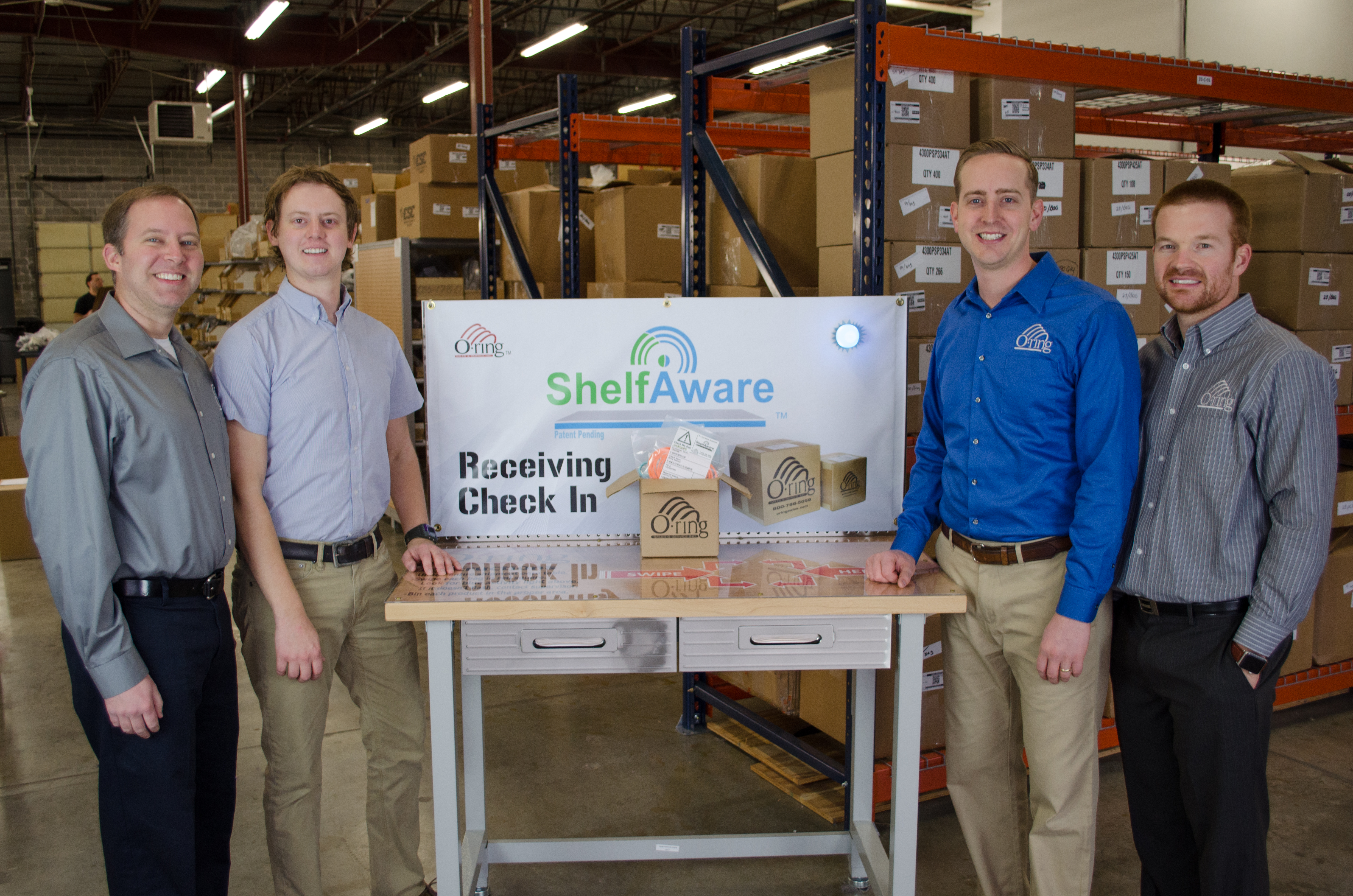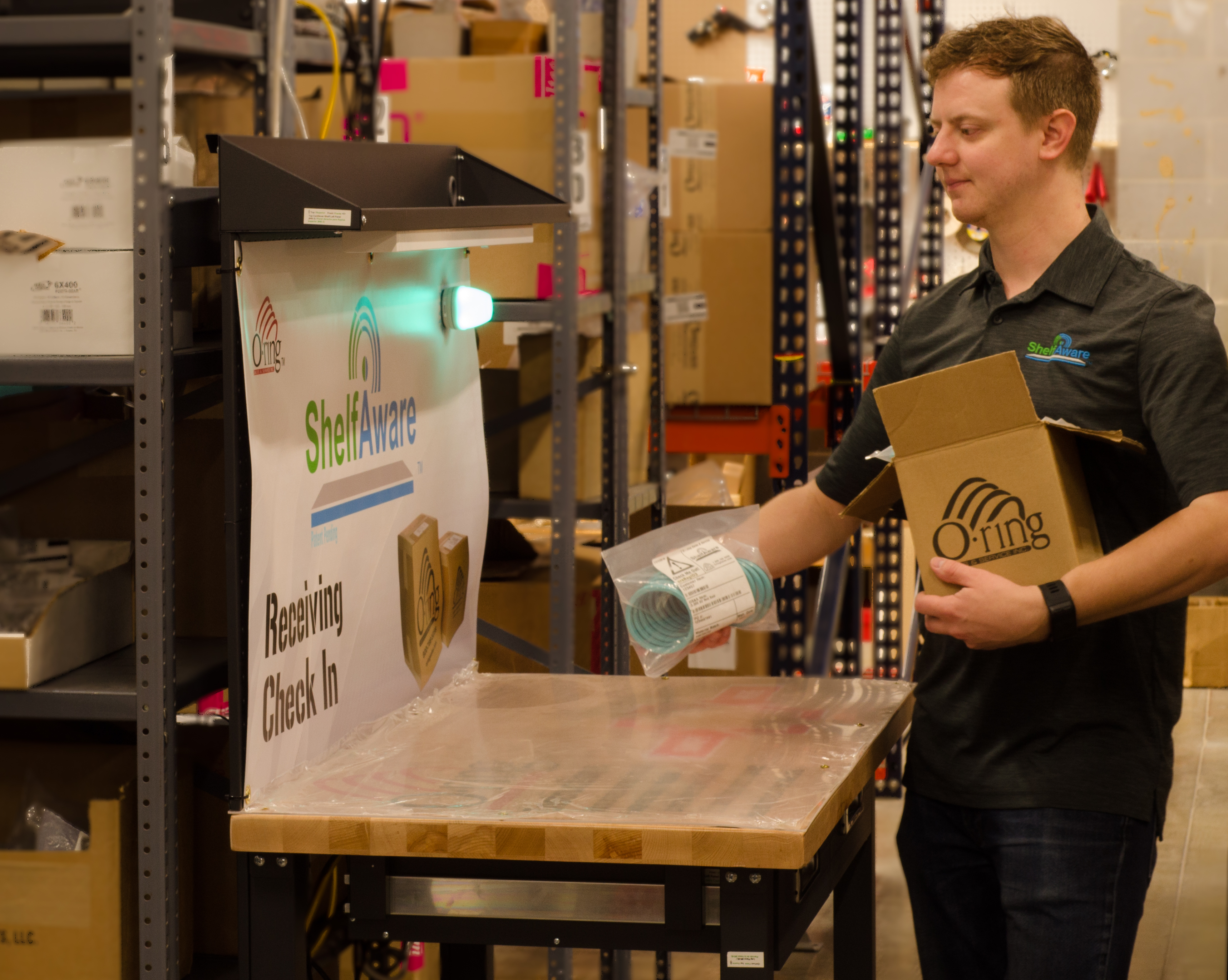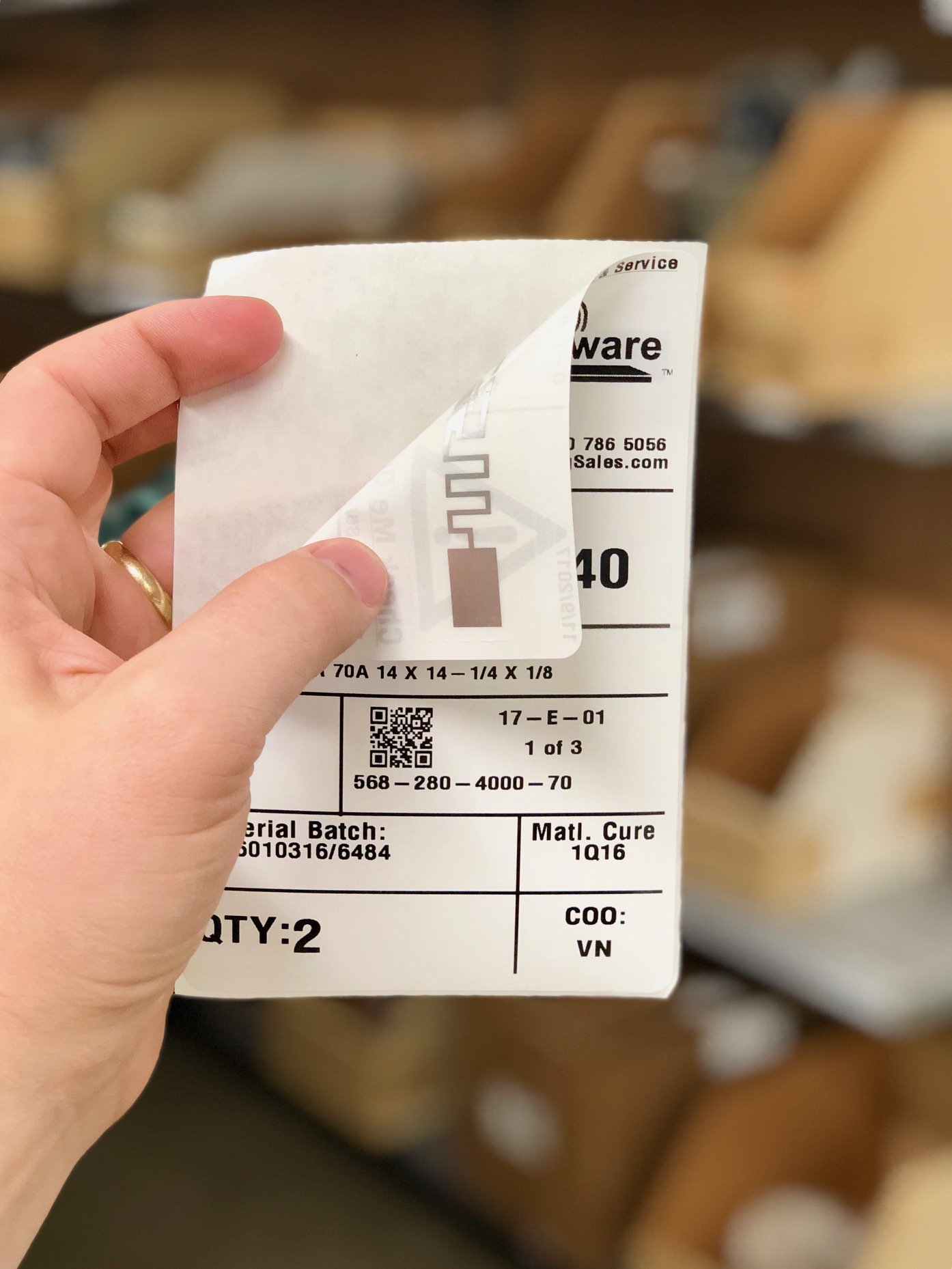by Gary Mintchell | Aug 10, 2020 | Business, Commentary, News
I love irony. No sooner had I discussed with a colleague about the time I worked for a couple of McKinsey alums than I received an email promoting a new study undertaken by, you guessed it, McKinsey. Actually the McKinsey Global Institute (MGI). The paper’s authors researched global supply chains very timely in light of the Covid-19 pandemic. The report highlights vulnerabilities in global supply chains and how resilience takes priority, calculating ongoing cost of shocks and prospects for production to shift.
In brief:
- Industries experience month-long disruptions every 3.7 years on average
- Companies can expect supply chain disruptions to erase 40 percent of a year’s profits over the course of a decade on average—and extreme events take an even bigger toll
- Up to a quarter of global trade flows could move to different countries over the next five years if companies restructure their supplier networks and governments take action. But moving supply chains is not the only way to build resilience.
The idea of chasing low-cost labor across the globe while ignoring supply chain risks and costs always seemed goofy to me. For, I didn’t waste my years as the unofficial chief manufacturing cost analyst for a medium-sized manufacturer. But here is some weighty analysis that emphasizes the risks.
The stakes are high, according to Risk, resilience, and rebalancing in global value chains, a new report from the McKinsey Global Institute (MGI). MGI analyzed 23 industry value chains to assess their exposure to specific types of shocks, including pandemics, conflicts, cyberattacks, trade wars, natural disasters, and climate risks. Industries have different exposure to these shocks based on their geographic footprint, factors of production, and other variables.
Based on the frequency and cost of disruptions, MGI scenarios show companies in most industries can expect shocks to erase 45 percent of one year’s EBITDA on average over the course of a decade. A single extreme event could cause even bigger financial losses. On top of this bottom-line impact comes the additional cost of rebuilding damaged physical assets, losing market share to competitors that are able to sustain operations, and significant societal harm such as loss of life, loss of jobs, shortages of critical goods, and damage to communities.
Geographic concentration can often produce supply chain bottlenecks when a shock hits. MGI finds 180 goods that are exported primarily from just one country, worth $135 billion in trade annually. Another issue is that large multinationals can have thousands of suppliers—but most have little visibility beyond the top tier of those tightly interconnected networks.
Will companies restructure their supply chains as part of a flight to safety? Yes and no, the report finds. There is an economic logic behind the way industry value chains have evolved. Given the scale, complexity, and interconnectedness of value chains, they are harder to move than is commonly realized.
MGI estimates that 15 to 25 percent of global goods exports, worth $2.9 trillion to $4.6 trillion annually, could conceivably move to new countries over the next five years. This is based on both economic factors, such as the cost of relocating production, and non-economic factors, such as governments changing policy to promote domestic production of goods deemed essential or important to national economic security.
“The prospect of a significant geographic rebalancing in global supply chains represents a risk for the companies and countries that might lose out—but a potentially significant opportunity for those that manage to capture a share of this production. This could have important consequences for future growth and employment,” says Susan Lund, a partner at the McKinsey Global Institute. “But supply chains involve thousands of independent firms, reflecting specialization, access to consumer markets around the world, substantial sunk costs, and long-standing relationships. Relocating is not a simple task.”
To attracting more production, countries need to develop strong supplier ecosystems, specialized workforce skills, robust infrastructure, and an attractive business environment.
There is more to resilience than changing where goods are made, however. Operational choices and the structure of a company’s supplier network can heighten or lessen vulnerability to disruptions. Common practices such as sourcing from a single supplier, relying on customized inputs with few substitutes, and carrying substantial debt can magnify the financial impact of a shock if they are not calibrated to account for current levels of risk.
Among the steps companies can take are mapping the sub-tiers of their supply chains in detail and connecting them digitally for better transparency; building the capacity to flex production across multiple sites; holding more inventory; and strengthening their balance sheets.
The COVID pandemic is prompting action at a time when cost structures are changing across countries and revolutionary digital technologies are gaining traction in global manufacturing.
“Supply chain shocks are not a new phenomenon, but only a handful of leading companies have really moved to minimize their risk until now,” says Katy George, senior partner and global leader of McKinsey’s operations practice. “That’s largely because of a perception that resilience has to come at the cost of efficiency. But that’s no longer true. Now companies have new tools at their disposal to become more resilient and more productive.”

by Gary Mintchell | May 21, 2018 | Internet of Things, Manufacturing IT, Software
Hannover Messe was the place to learn the latest about all things digital—digital twin, Industry 4.0, Industrial Internet of Things (IIoT). SAP was one of the many stops in my itinerary advancing the trend.
My contact at the SAP booth at Hannover wasn’t around when I arrived for my appointment, so I left—only to get a text a half-hour later that he had arrived. But I was off to another appointment by then. However I did glean this information from the company at and following the show.
SAP enters the digital twin era
SAP SE has introduced SAP S/4HANA Cloud for intelligent product design, a new solution for collaborative research and development.
The solution, which is built on SAP Cloud Platform using SAP’s latest digital twin technology, is one of the building blocks for a network of digital twins to enable new business models.
Powered by SAP Leonardo and integrated with business processes in the digital core, SAP S/4HANA Cloud for intelligent product design enables customers to accelerate product design and development with requirement-driven systems engineering and instant collaboration across an extended network of suppliers and partners.
“The solution provides shared views of digital twin information for customers to gain live insights on new products and to store, share and review engineering documents with internal and external participants,” said Bernd Leukert, Member of the Executive Board of SAP SE, Products & Innovation.
SAP’s network of digital twins synchronizes the virtual, physical, conditional, and commercial definitions of assets and products in real time to accelerate innovation, optimize operating performance, predict service requirements, improve diagnostics and enhance decision-making. It enables new levels of collaboration among manufacturers of products, operators of assets, suppliers and service companies. The approach combines digital twins with manufacturing solutions from SAP, cloud networks and SAP Leonardo capabilities, including machine learning, blockchain and Internet of Things (IoT), to optimize the product lifecycle with:
• Digital representation: SAP synchronizes digital twin business data, product information, asset master data and IoT-connected data from both on-premise and cloud solutions enabling companies to represent the world digitally. Solutions including SAP Predictive Engineering Insights, SAP Predictive Maintenance and Service and the SAP 3D Visual Enterprise applications provide access to rich data processing capabilities and live configuration, state, condition and control information.
• Business process: Rich enterprise-grade data processing capabilities allow customers to create, access and update digital twins to support business processes. SAP solutions provide an integrated data model from design, production and maintenance to service, including packaged integration to existing systems for computer-aided design, ERP, and product lifecycle management. Offerings providing end-to-end process support for manufacturers and operators include SAP S/4HANA, the SAP Engineering Control Center integration tool, SAP Hybris Service Cloud solutions, and the SAP Manufacturing Integration and Intelligence and SAP Manufacturing Execution applications.
• Business networks: With leading network offerings such as SAP Ariba solutions, SAP Asset Intelligence Network, and the SAP Distributed Manufacturing application, SAP is uniquely positioned to provide a virtual platform for collaboration on products and assets. The network of digital twins enables secure data access, sharing and governance on a global scale.
• Networks of digital representation: SAP enables twin-to-twin connections in systems within a specific asset and on an asset-to-asset level. SAP solutions such as SAP Asset Intelligence Network provide semantic and industry-standards support in an asset core modeling environment to enable live enrichment during the product or asset lifecycle.
Digital Manufacturing Cloud
SAP Digital Manufacturing Cloud helps companies optimize performance, elevate production quality and efficiency, and ensure worker safety.
Drawing on SAP’s expertise in the Industrial Internet of Things (IIoT), predictive analytics and supply networks, the solution enables manufacturers to deploy Industry 4.0 technologies in the cloud.
The new cloud solution extends and complements the digital manufacturing portfolio of on-premise solutions from SAP and is available in different bundles to serve manufacturers of varying sizes in both discrete and process industries and roles within their respective organizations.
SAP customers can choose from the SAP Digital Manufacturing Cloud solution for execution, which provides all solutions in the manufacturing cloud portfolio, or the SAP Digital Manufacturing Cloud solution for insights, which focuses on performance management and predictive quality.
“Manufacturers in the era of Industry 4.0 require solutions that are intelligent, networked and predictive,” said Leukert. “Our manufacturing cloud solutions help customers take advantage of the Industrial Internet of Things by connecting equipment, people and operations across the extended digital supply chain and tightly integrating manufacturing with business operations.”
SAP Digital Manufacturing Cloud includes the following:
• SAP Digital Manufacturing Cloud for execution: Industry0-enabled shop floor solution features “lot size one” and paperless production capabilities. It integrates business systems with the shop floor, allowing for complete component and material-level visibility for single and global installations.
• SAP Digital Manufacturing Cloud for insights: Centralized, data-driven performance management enables key stakeholders to achieve best-in-class manufacturing performance and operations.
• Predictive quality: This helps manufacturers gain valuable insights to conform to specifications across processes and streamline quality management. It also allows manufacturers to apply predictive algorithms that can reduce losses from defects, deficiencies or variations, and recommend corrective actions.
• Manufacturing network: The network provides a cloud-based collaborative platform integrated with SAP Ariba solutions connecting customers with manufacturing service providers, such as suppliers of 3D and computer numerical control (CNC) printing services, material providers, original equipment manufacturers (OEM) and technical certification companies.
Also at Hannover Messe 2018, SAP announced SAP Connected Worker Safety, a solution designed to reduce risks, costs and protect employees. Information from wearables and other sensor-enabled equipment can help companies react immediately to a hazardous situation or incident while proactively managing worker fatigue and other hazard inducers. Real-time information allows monitoring of compliance at all times against regulatory and other parameters.

by Gary Mintchell | Apr 5, 2018 | Data Management, News
Innovation springs from small and new companies, so holds Andrew Johnson, CEO of ShelfAware, a software startup in the what could be called the MRO commodity business. His family business, Oringsales.com, is a master distributor of those crucial but often overlooked components called O-rings. Suppliers to maintenance shops and OEMs have been tackling vendor managed inventory and other inventory tracking processes for many years. But how do you economically track something as small as an O-ring?
The brothers running the distributorship business figured out that RFID tags were becoming inexpensive enough to warrant use in small bags of these small components. They wrote an application, embedded RFID tags on the bags, and established a workflow. Originally for their customers of O-rings, customers soon demanded the system for other small components, as well.

The key proposition—remotely monitor consumption of small parts. He calls it get “the dudes in trucks” off the streets to better utilize their time rather than driving around counting parts.
Johnson is entrepreneurial and evangelistic. He told me, ”I’m reaching out to you because I have a message I would like to send to our USA manufacturing friends that I think they would find very interesting. The time is now to innovate our manufacturing infrastructure if we intend on bringing manufacturing back to the USA in a big way. Its easier than ever before to take the tech leap with many Internet of Things systems popping up every month that don’t require integration into your ERP systems to achieve a big ROI. It’s literally plug and play technology for manufactures.
This is his innovation story.
I am a young entrepreneur (32) that has grown up in the industrial manufacturing industry as a member of a family run industrial parts distributor. I spent many summers of my childhood inspecting o-rings, gaskets, and other seals… very exciting summer job. Now I am working with my 3 brothers in our family business as we try to innovate the industrial landscape. We recently invented & patented an intelligent inventory supply chain that is powered by passive RFID technology. We deployed our Internet of Things supply chain system at 3 Midwestern manufactures last year (Eskridge Mfg, Energy Mfg, Oilgear Mfg) and the system is performing better than we could have ever imagined.
Very simply put, our system, ShelfAware, monitors the consumption of commodity inventory in real time using RFID chips that are embedded into the product packaging. This consumption data, Big Data, is then analyzed and fed to the manufacturer’s supply chain partners to guarantee no stock out, lean inventory, and lean inventory pipe-lines which all means the right parts, at the right time, cheaper. Our three key questions we practically chant while working with our system are: Is this Accurate?, Efficient?, Effective?

Yes, RFID inventory systems have been around for years, but never really applied to the consumable commodity products, aka “small parts”. The main tech advancements that have made a system such as ShelfAware viable now are:
- RFID tags are getting really really cheap, sometimes less than $0.05 each
- The internet has allowed the software driving the system to be flexible and easily accessible
- RFID hardware is much less expensive and now highly reliable

The business plan, a bit audacious, announces “The Opportunity to Disrupt a Marketplace with a Collaborative Platform”.
The traditional large industrial supply incumbents who offer vendor managed inventories (VMI) have expanded their product offering horizontally leaving them spread too thin. They are good at some product groups, but great at very few product groups. This has created vulnerabilities related to product expertise like sourcing, engineering, and general product support. ShelfAware intends on exploiting these vulnerabilities by giving many niche product vendors the ability to collaborate on ShelfAware’s IoT Inventory Platform thus creating a more efficient crowd sourced inventory supply chain.
Objective of ShelfAware as a company states “To create an IoT Intelligent Inventory Platform that can support multiple independent product vendors who collectively support large supply chains demanded by Large or complex OEM’s. ShelfAware will create value in the industrial supply market by revolutionizing supply chain theory through the use of a collaborative IoT, RFID Intelligent Inventory Platform.
The Platform must fulfil two primary roles for this supply chain model to be successful with emphasis placed on the IoT vendor collaboration software.
- Deploy an intelligent inventory management system inside manufacturing facilities.
- Deploy a Vendor Side supply chain cooperative system.
I am intrigued by the whole concept. And it seems to be working now, even in its infancy.

by Gary Mintchell | May 26, 2017 | Internet of Things
Dell EMS Internet of Things (IoT) group assembled a mini supply chain as its booth at the user conference Dell EMS World in Las Vegas in May. At the October Dell EMS World in Austin, these were put together as an ice cream factory and distribution, and the booth featured an ice cream machine. I sure could have used an ice cream by the time I got through all the exhibits.
The Dell IoT Gateway was the common denominator of the exhibit tying everything together.
The first station features construction. Here are a couple of guys trying out the DAQRI augmented reality helmets. I had the opportunity to try these in Hannover. A really cool application of AR.

They are looking at a combination of the construction (see the red “steel” framework) and drawings that show the layout of electrical conduit, HVAC ducting, and other details. As a construction worker, they can get a feel of where things go, as well as spot interferences the designer missed.

This station showed product on its way to market through sensing and communication from Nokia.

Below is a layout of the Emerson process manufacturing system.

They brought actual pipe, pump, motor, instruments, wirelessHART communication. No, it didn’t make ice cream.

This station featured IMS Evolve–an application that brings sensor data into the cloud and provides track and trace, as well as other analytics, assuring the safety of the food product through the supply chain from the point of view of proper temperature.

Don’t forget security! Here is a photo of a physical security video system from V5.

The Dell Gateway is an edge device capable of accumulating data from the disparate sources, performing storage and analysis at the edge then sending information to the cloud for further analysis. It seems that everywhere I go, the “edge” is the place where innovation is centered right now. This simple demo showed the power of the edge.

by Gary Mintchell | Apr 18, 2016 | Operations Management
Part of the promise of digital manufacturing, also known as Industry 4.0 or Industrial Internet of Things, concerns breaking the digital barriers, freeing information to flow to where it is needed.
This relates to the promise of implementing an Enterprise Resource Planning (ERP) system in a manufacturing enterprise, which always fell a little short due in large part to the lack of integrated information. Timely, accurate data from production did not find its way into the enterprise system.
Effective digital manufacturing extends beyond just the facility into the ecosystem of company facilities, logistics, suppliers, and customers. In other words, the next great leap of progress will be an integrated, digital supply chain.
“The Current and Future State of Digital Supply Chain Transformation,” by Capgemini Consulting, GT Nexus and Infor, reports on a study that surveyed over 300 executives from some of the largest global manufacturing and retail organizations across North America and Europe, and found that:
- Currently, only 15% have access to data from their extended supply chains, and just 23% of those that have access, actually analyze that data for decision making purposes
- Almost 50% of respondents admit that right now “traditional” methods such as phone, fax, email are still the dominant ways to interact with supply chain partners
- Only 23% say that the majority of data from the extended supply chain is analyzed and used for decision making, but in five years, that number is expected to jump to 68%
Most research studies conducted on the topic so far have examined Digital Transformation within organizations, or between organizations and their customers. This new research project is the first of its kind that explores the current state and future of Digital Transformation especially between organizations and all of their partners across the extended value chain.
The study surveyed 337 executives from some of the largest global manufacturing and retail organizations across Europe and North America.
Key findings of the research study include:
Digital Transformation of the Supply Chain is important
- 75% of respondents say Digital Transformation of the supply chain is “important”
- 50% say that Digital Transformation is “very important”
- 70% say they have started a formal Digital Supply Chain Transformation effort
Progress has been slow so far
- >30% of respondents said they are “dissatisfied” with progress so far
- Only 5% are “very satisfied”
Key technology enablers have been identified, but are not widely used yet
- Supply Chain Visibility Platforms/Tools (94%), Big Data Analytics (90%), Simulation Tools (81%) and Cloud (80%) are seen as the biggest technology enablers of Digital Supply Chain Transformation
- But 48% of respondents admit that right now “traditional” methods such as phone, fax, email are still the dominant ways to interact with supply chain partners
Dramatic changes are expected within just five years
- Today only 15% of respondents say that the majority of data from the extended supply chain is accessible to their organization. In five years, that number jumps to 54%
- Today only 23% of respondents say that the majority of data from the extended supply chain is analyzed and used for decision making. In five years, that number jumps to 68%
- Five years from now, 95% of respondents expect more processes with suppliers to be automated
- Five years from now, 94% expect to receive more real-time status updates from across the entire supply chain
The expected benefits of Digital Supply Chain Transformation include, but go well beyond cost reductions for logistics, inventory and maintenance, improvements in customer service and higher overall equipment effectiveness. Perhaps more importantly, Digital Supply Chain Transformation is expected to dramatically improve an organization’s agility. Agility is necessary to respond to changing market conditions, to new market entrants that can threaten existing business models or to unexpected supply chain disruptions. Such disruptions have already caused major harm to the financial performances and reputations of countless organization over the years.
Mitigating the impact of these unforeseen disruptions has become a main priority and a major driver behind the need to digitally transform. But according to the study, current levels of collaboration and visibility across the network are still low. That limits agility.
“75% of respondents say Digital Transformation of the supply chain is important, but a massive gap exists today between where companies are today and where they expect to be in just five years from now,” said Mathieu Dougados, Senior Vice President, Capgemini Consulting. “Transformation initiatives inside the four walls of the enterprise pose significant challenges within themselves. But in today’s globalized and outsourced world, Digital Transformation can only be successful if companies approach it with a holistic view of their entire value chain. That value chain can include hundreds of partners. So connectivity between partners, cross-company access to data, and the use network-wide analytics become the key focus areas.”
“Supply chain transformation is a massive undertaking that requires leadership and vision at the C-level, and a holistic transformation approach that fosters automation, connectivity, data sharing and collaboration across the entire value chain,” said Kurt Cavano, Vice Chairman and Chief Strategy Officer at GT Nexus. “This survey showed that manufacturers and retailers clearly have an idea of where they need to be and what digital technologies will get them there in the next five years. But it’s going to be a real sprint given the current reliance on outdated, analogue technologies such as phone, fax and email to collaborate and execute in the global supply chain. Meanwhile, risk of supply chain disruptions runs high, with an expensive cost to pay.”


















